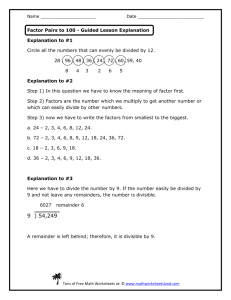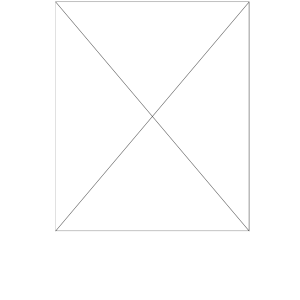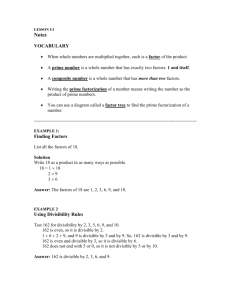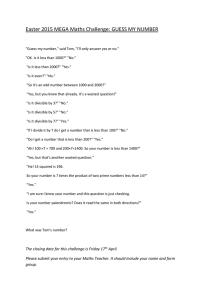Unit 1 Notes
advertisement
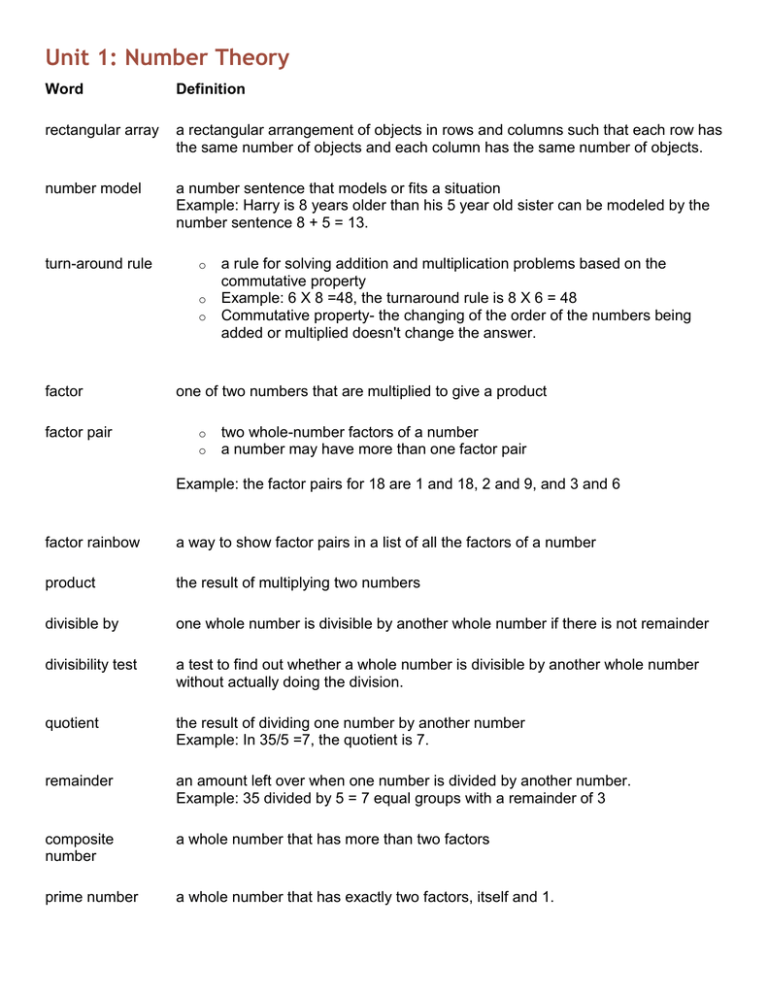
Unit 1: Number Theory Word Definition rectangular array a rectangular arrangement of objects in rows and columns such that each row has the same number of objects and each column has the same number of objects. number model a number sentence that models or fits a situation Example: Harry is 8 years older than his 5 year old sister can be modeled by the number sentence 8 + 5 = 13. turn-around rule o o o factor factor pair a rule for solving addition and multiplication problems based on the commutative property Example: 6 X 8 =48, the turnaround rule is 8 X 6 = 48 Commutative property- the changing of the order of the numbers being added or multiplied doesn't change the answer. one of two numbers that are multiplied to give a product o o two whole-number factors of a number a number may have more than one factor pair Example: the factor pairs for 18 are 1 and 18, 2 and 9, and 3 and 6 factor rainbow a way to show factor pairs in a list of all the factors of a number product the result of multiplying two numbers divisible by one whole number is divisible by another whole number if there is not remainder divisibility test a test to find out whether a whole number is divisible by another whole number without actually doing the division. quotient the result of dividing one number by another number Example: In 35/5 =7, the quotient is 7. remainder an amount left over when one number is divided by another number. Example: 35 divided by 5 = 7 equal groups with a remainder of 3 composite number a whole number that has more than two factors prime number a whole number that has exactly two factors, itself and 1. square array is a special rectangular array that has the same number of rows as it has columns square number a number that is a product of a whole number multiplied by itself exponent a small raised number in exponential notation that tells how many times the base is to be multiplied by itself base the number that is raised to some power exponential notation a way to show repeated multiplication by the same factor 3 Example: 2 is exponential notation for 2 X 2 X 2 square root 4 is the square root of 16 because 4 X 4 = 16 name-collection box a box-like diagram tagged with a given number and used for collecting equivalent names for that number. factor string a number written as a product of at least two whole-number factors. Example: a factor string for the number 24 is 2 X 3 X 4. This factor string has three factors, so its length is 3. The number 1 is never part of a factor string. factor tree a way to get the prime factorization of a number. The original number is written as a product of factors; then each of these factors is written as a product of factors and so on, until the factors are all prime numbers. prime factorization a whole number expressed as a product of prime factors. Example: the prime factorization of 24 is 2 X 2 X 2 X 3. Factors o o o are a way to breakdown numbers help you understand the relationships between numbers there are different ways to express factors Prime Factors of the number 12 12 = 2 X 2 X 3 the numbers 2 & 3 are prime numbers Factors of the number 12 1 & 12, 2 & 6, 3 & 4 Factor Rainbow for the number 12 1, 2, 3, 4, 6, 12 Divisibility Rules Help you decide if a number will be divisible by another number. If you know these tests it can help make dividing easier for you. A number is divisible by 2- if it is an even number A number is divisible by 3- if the sum of the digits is divisible by 3. (534 is divisible by 3 because 5 + 3 + 4=12 and 12 is divisible by 3) A number is divisible by 6-if it is divisible by 2 & 3. A number is divisible by 9-if the sum of the digits is divisible by 9. (8,253 is divisible by nine because 8 + 2 + 5 + 3= 18) A number is divisible by 5- if it ends in a 5 or a 0. A number is divisible by 10 -if it ends in a zero. Hints: 1. Underline the last digit of the number you are working with. 2. Determine if the number will be divisible by 2, 5, and 10 first because they are the easy ones. 3. Next add up the digits in the number and write the sum in a circle next to your number. 4. After you add the digits you can determine if the number will be divisible by 3, 6, and 9.


